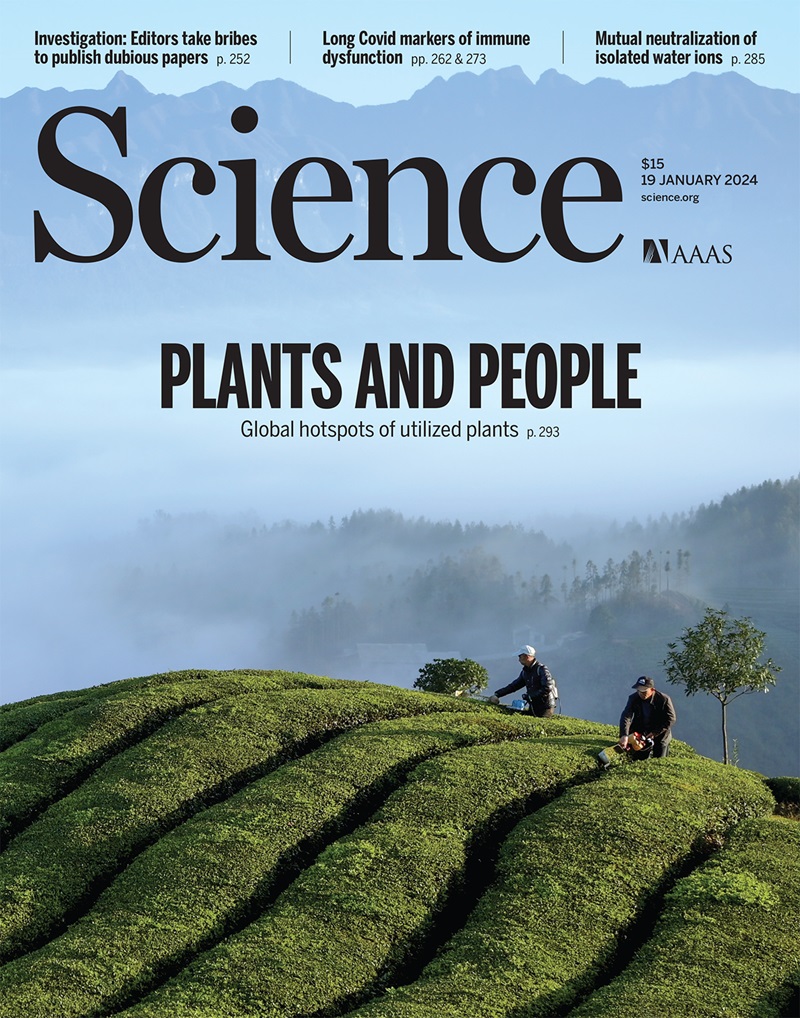Cooperative adsorbate binding catalyzes high-temperature hydrogen oxidation on palladium
IF 44.7
1区 综合性期刊
Q1 MULTIDISCIPLINARY SCIENCES
引用次数: 0
Abstract
Atomic-scale structures that account for the acceleration of reactivity by heterogeneous catalysts often form only under reaction conditions of high temperatures and pressures, making them impossible to observe with low-temperature, ultra-high-vacuum methods. We present velocity-resolved kinetics measurements for catalytic hydrogen oxidation on palladium over a wide range of surface concentrations and at high temperatures. The rates exhibit a complex dependence on oxygen coverage and step density, which can be quantitatively explained by a density functional and transition-state theory–based kinetic model involving a cooperatively stabilized configuration of at least three oxygen atoms at steps. Here, two oxygen atoms recruit a third oxygen atom to a nearby binding site to produce an active configuration that is far more reactive than isolated oxygen atoms. Thus, hydrogen oxidation on palladium provides a clear example of how reactivity can be enhanced on a working catalyst.
吸附剂结合催化钯上的高温氢氧化反应
通常只有在高温高压的反应条件下才会形成原子尺度的结构,因此无法用低温、超高真空的方法对其进行观察。我们介绍了在高温条件下,在广泛的表面浓度范围内钯催化氢氧化的速度分辨动力学测量结果。速率对氧覆盖率和阶跃密度有复杂的依赖性,这可以用基于密度泛函和过渡态理论的动力学模型来定量解释,该模型涉及至少三个氧原子在阶跃处的合作稳定构型。在这里,两个氧原子将第三个氧原子招引到附近的结合位点,从而产生一种活性构型,其活性远远高于孤立的氧原子。因此,钯上的氢氧化提供了一个清晰的例子,说明如何在工作催化剂上提高反应活性。
本文章由计算机程序翻译,如有差异,请以英文原文为准。
求助全文
约1分钟内获得全文
求助全文
来源期刊

Science
综合性期刊-综合性期刊
CiteScore
61.10
自引率
0.90%
发文量
0
审稿时长
2.1 months
期刊介绍:
Science is a leading outlet for scientific news, commentary, and cutting-edge research. Through its print and online incarnations, Science reaches an estimated worldwide readership of more than one million. Science’s authorship is global too, and its articles consistently rank among the world's most cited research.
Science serves as a forum for discussion of important issues related to the advancement of science by publishing material on which a consensus has been reached as well as including the presentation of minority or conflicting points of view. Accordingly, all articles published in Science—including editorials, news and comment, and book reviews—are signed and reflect the individual views of the authors and not official points of view adopted by AAAS or the institutions with which the authors are affiliated.
Science seeks to publish those papers that are most influential in their fields or across fields and that will significantly advance scientific understanding. Selected papers should present novel and broadly important data, syntheses, or concepts. They should merit recognition by the wider scientific community and general public provided by publication in Science, beyond that provided by specialty journals. Science welcomes submissions from all fields of science and from any source. The editors are committed to the prompt evaluation and publication of submitted papers while upholding high standards that support reproducibility of published research. Science is published weekly; selected papers are published online ahead of print.
 求助内容:
求助内容: 应助结果提醒方式:
应助结果提醒方式:


